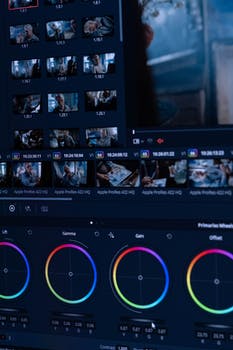Hi everyone,
In this activity you will outline a short student video activity and a substantial video project, providing a few key details to sketch out an initial premise for each.
In a portfolio post, outline two student activities. The first is a short individual video activity. Students will create and share a video of 2 minutes or less in an activity that takes less than an hour to complete. In the second teams of students will create a video of 5 to 15 minutes duration as the culminating deliverable of a major unit of learning (2 weeks or more).
For each outline present the following details:
- Course, topic and grade/age level
- 1 learning outcome addressed by producing the video
- Software and hardware you anticipate students will use
- Platform where students will share or distribute their videos
Short Video Activity
Course: COMM 1010
Topic: Non-Verbal Communication
Grade Level: Post-Secondary
Learning Outcome: Students will effectively use various aspects of the sit, uncross, relax, eye contact, touch, your intuition (SURETY) model to display non-verbal communication (Stickley, 2011, as cited in Lapum et al., 2020).
Activity Summary: Students will record a 1-2 minute video displaying their ability to imitate any 3 aspects of the SURETY model of non-verbal communication (Stickley, 2011, as cited in Lapum et al., 2020).
For example, a student may choose to dramatize sitting at an angle to the camera (S), uncrossing their arms and legs (U), and maintaining eye contact with the camera in a relaxed way (E). In contrast, another student may choose to record a 1-2 minute video displaying their ability to imitate sitting at an angle to the camera (S), uncrossing their arms and legs (U), and shifting their arms, hands, and legs in a way which projects safety and a welcoming attitude (T).
Software: Students are free to select video-editing software in accordance with their personal preferences. Two recommended video-editing programs are Openshot and Shotcut.
Hardware: Students are free to use their cellphones, tablets, webcams, or any other device of their preference to record their short videos.
Distribution Platform: Students will upload their short videos to YouTube and will provide an unlisted link to their instructor and their classmates for forum review.
Student Video Project
Course: COMM 1010
Topic: Verbal & Non-Verbal Communication
Grade Level: Post-Secondary
Learning Outcome: Students will effectively use various aspects of sit, uncross, relax, eye contact, touch, intuition SURETY non-verbal communication model alongside verbal communication (Stickley, 2011, as cited in Lapum et al., 2020).
Activity Summary: Students will create a 5 to 15 minute video displaying a combination of at least 3 aspects of the SURETY non-verbal communication model with verbal communication alongside a fellow classmate (Stickley, 2011, as cited in Lapum et al., 2020).
Outline
(1) In teams of two, students will work together to write a short dialogical script between a counsellor and a client.
(2) When the teams complete their scripts, they should begin reading and rehearsing their lines as both the counsellor and the client.
(3) When the teams feel that they have a firm grasp on reciting their scripts to one another, it is important that they practice the various aspects of the SURETY model (Stickley, 2011, as cited in Lapum et al., 2020).
The six aspects of the SURETY (2011) model that students can choose from are:
Sitting at an angle to the client (S).
Uncrossing arms and legs (U).
Relax (R).
Eye Contact (E).
Touch (T).
Your Intuition (Y).
(4) In teams of two, students will record themselves taking turns roleplaying from the perspective as a counsellor actively listening and engaging with a client.
For example, when each student roleplays as the counsellor they should ensure that they display at least 3 of the 6 SURETY aspects (i.e., eye contact, uncrossed arms, and sitting in a relaxed position) alongside their use of verbal communication (i.e., asking open-ended questions and asking for clarification) (Stickley, 2011, as cited in Lapum et al., 2020; McGill University, n.d., p. 1, 7).
If students require examples of active listening, open-ended questions, and negotiation questions to include in their scripts, they can access examples by accessing the McGill University resource below:
https://www.mcgill.ca/engage/files/engage/active_listening_and_effective_questioning.pdf\
Software: Students are free to select video-editing software in accordance with their personal preferences. Two recommended video-editing programs are Openshot and Shotcut.
Hardware: Students are free to use their cellphones, tablets, webcams, or any other device of their preference to record their videos.
Distribution Platform: Students will upload their videos to YouTube and will provide an unlisted link to their instructor through Moodle and to their classmates through the discussion forum.
Best,
Carson 🙂
References
Lapum, J., St-Amant, O., Hughes, M., Garmaise-Yee, J,. Lee, C. (2020). Communication for the Nursing Professional – 1st Canadian Edition. Toronto, ON: Ryerson University Pressbooks. Retrieved from https://pressbooks.library.ryerson.ca/communicationnursing/chapter/non-verbal-communication/
McGill University. (n.d.). Active Listening & Effective Questioning -McGill University. Retrieved March 22, 2022, from https://www.mcgill.ca/engage/files/engage/active_listening_and_effective_questioning.pdf\










